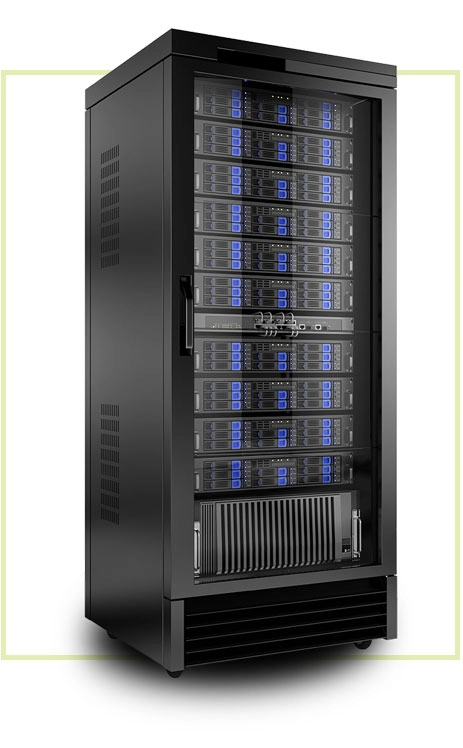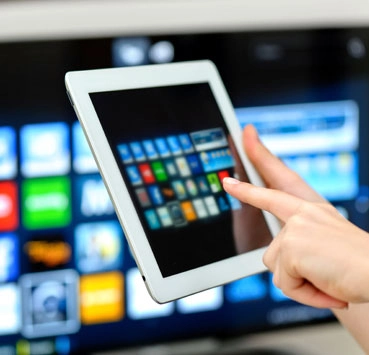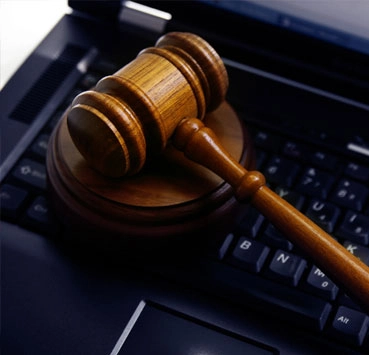
Information Technology Networks, equipment, software…
All about electronic data!
Information Technology (IT) refers to the use of computers, storage, networks, devices, infrastructure and processes to create, process, store, secure and exchange all kinds of electronic data. It can range from the traditional computer applications to the immersive display concept and more IT solutions and communication tools.
01
Service quality and customer relationships
Traditionally, the process of enhancing customer relationship quality has traditionally been based on face-to-face interaction between the service provider’s staff and clients. However, the major revolutions in the development of information and communication technologies have provided new opportunities to create and maintain customer relationships.
Therefore, the question arises as to the link between the use of IT and the enhancement of the customer relationship quality. The main aim is actually to understand the opportunities offered by IT to improve customer satisfaction as well as the effectiveness of marketing operations.
IT includes several levels of equipment (hardware), virtualization, management or automation tools, operating systems and applications (software) to perform key functions.
Devices, peripherals and user software, such as laptops, smartphones or even recording devices, can be part of the IT. The IT may also refer to the architectures, methodologies and rules governing the use and storage of data.
In addition to focusing on knowledge, optimizing collaboration has become a necessity within the company itself. There are several ways to do this. Here, the challenge for IT departments is to provide a digital workplace set up to improve collaboration and communication, taking into account employee criteria.
Today, with social networks, the new generation is no longer satisfied with traditional communication tools. And that’s the mission of IT departments: to ensure that they provide the best solutions.
The solutions chosen by companies must also be agile. The platforms implemented and the salespeople who work with the company must be able to monitor the evolution of the company in question.
However, when choosing suppliers, you should most likely keep in mind their ability to meet your current and future needs, as well as the ongoing changes you will face.
In the digital age, information has become a major asset and a competitive advantage for companies. The exponential growth and deployment of data analysis solutions demonstrate the importance of promoting knowledge as a reliable value for the company.
The IT department must make the information available, and within the reach of the entire company. This is achieved through the implementation of an effective knowledge management system that collects and connects data.
02
Information Technology’s sectors and subsectors

Research centres
These are whole research centres which are totally dedicated to information technology.

IT and economy
IT has become an integral part of the way businesses and society in general operate.

Succeeding in “IT”
IT training demonstrates the role and steps of financing for IT business leaders.


Computer systems
A high concentration of jobs and establishments, but also by strong growth.

Artificial intelligence
Many companies use artificial intelligence (AI) for operational research and data valorisation.

Telecommunication services
Definitely a sector that guarantees our digital infrastructures of tomorrow.
Software development
Automation and technical advancements
Software is quickly becoming integral part of human life, more on modern-technologies.net.
03
Information Technology services

Media services and content
The media and content sector is accelerating its migration to the Internet, both in open solutions and on operators’ managed services (IPTV, etc.). The the global market did not escape the crisis with a decline due to example of television services by 1.2% in 2009, mainly due to the decline in advertising (-9.5%). The market also faces more structural difficulties with a destruction of value with the digital ransition (decoupling, piracy, etc.).

IT regulations and laws
IT law is the subject of specialized university degrees (master’s degree in digital law, master’s degree in multimedia law, etc.) in law schools. The main areas of law covered by these university courses are intellectual property law (industrial property rights in the broad sense), civil law, commercial law, labour law, but also European law, private international law, consumer law or e-health law, tax law or distribution law. More on consultingrgpd.com.

Internet services
The use of the Web is now anchored in the mass market, with the youngest now even passing through more time on the Internet than in front of the TV. Services such as e-mail, search engines, e-commerce, social networks or videos are particularly popular. The Internet is developing, in particular thanks to the various models of advertising displays and sponsored links thus combining advanced statistical tools with popular services that generate a lot of data.
04
“IT” and education
The introduction of Information Technology in education responds to a challenge that many governments are trying to meet. But their gradual and disordered appropriation causes changes that extend beyond education to many areas of economic life and increasingly differentiated social categories. These changes lead to the need, or even the obligation, to design and implement a new educational model based on a new method of teaching-learning, or at least a fundamental reform of educational systems.